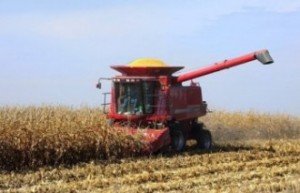
Written by Fred Love, Iowa State University News Service
Iowa farmers can save a chunk of change simply by making sure their tractors are in the right gear, according to personnel at Iowa State University working to make agricultural operations run more efficiently.
Many of the expenses associated with large-scale agriculture don’t give farmers much wiggle room, but energy efficiency offers some flexibility, said Mark Hanna, a scientist in the ISU Department of Agricultural and Biosystems Engineering.
For instance, farmers can’t do a lot about the costs associated with buying land, seeds and fertilizers. But when it comes to energy consumption?
“The savings are there for the taking,” Hanna said.
Much of the energy consumed on farms centers around the machinery that makes plowing, planting and harvesting possible. Making sure a tractor’s in the appropriate gear and keeping the throttle in the right position can make a real difference in the amount of fuel it burns, Hanna said.
He called it the “shift up and throttle back” technique. He recommends that farmers shift their tractors into a higher gear and adjust the throttle to limit the fuel supply to the engine when hauling lighter loads. Doing so will result in fewer engine revolutions per minute and use less fuel while maintaining the same travel speed, he said.
“A good deal of the time, you’re not using the full horsepower of the tractor,” he said. “In those situations, it makes sense to put it in a higher gear and pull the throttle back.”
Doing so can mean fuel savings of up to 20 percent, according to case studies conducted by ISU Farm Energy (with help from the Iowa Energy Center) using several tractor models pulling loads of varying weight.
Dana Schweitzer, program coordinator for ISU Farm Energy, said tilling offers additional chances for farmers to cut back on energy usage and save money. Schweitzer and Hanna recommend that producers conduct a cost-benefit analysis of their tillage practices to determine whether extensive tillage is worth the expense of the fuel it takes to carry out the task.
“We recommend practices that could reduce the need for tillage,” Schweitzer said. “That could be making fewer passes or adopting no-till practices for some or all of your acres.”
Schweitzer said ISU Farm Energy will participate in a pair of field days, one on June 24 at the Northeast ISU Research Farm near Nashua, and another on June 26 at the Northern ISU Research Farm near Kanawha, to give producers up-close looks at case studies that could lead to more efficient use of energy on farms. The ISU Farm Energy team regularly posts updates on its Twitter page, @ISU_Farm_Energy.
Hanna said the first step for farmers to improve their energy efficiency is to get a handle on how much energy they currently use. He recommended farmers keep their utility and fuel costs in a spreadsheet to track their expenses over time.
That way, they have a concrete idea of how much they’re saving as they implement energy saving measures, he said.
In addition to making farms more profitable, energy efficiency also benefits the environment, Hanna said.
“Taking efficiency seriously will lead to reduced fossil fuel usage, and limited tillage will benefit soil and water quality,” he said.
The story first appeared here.